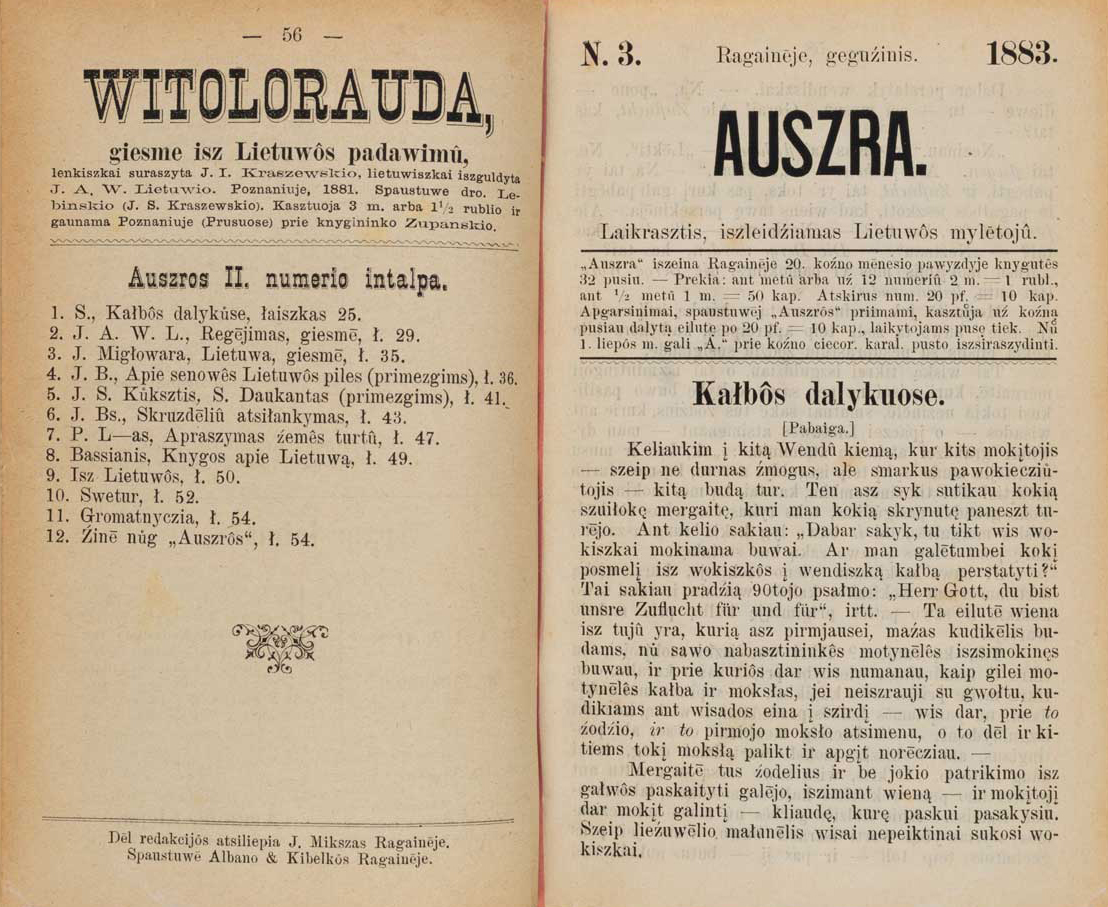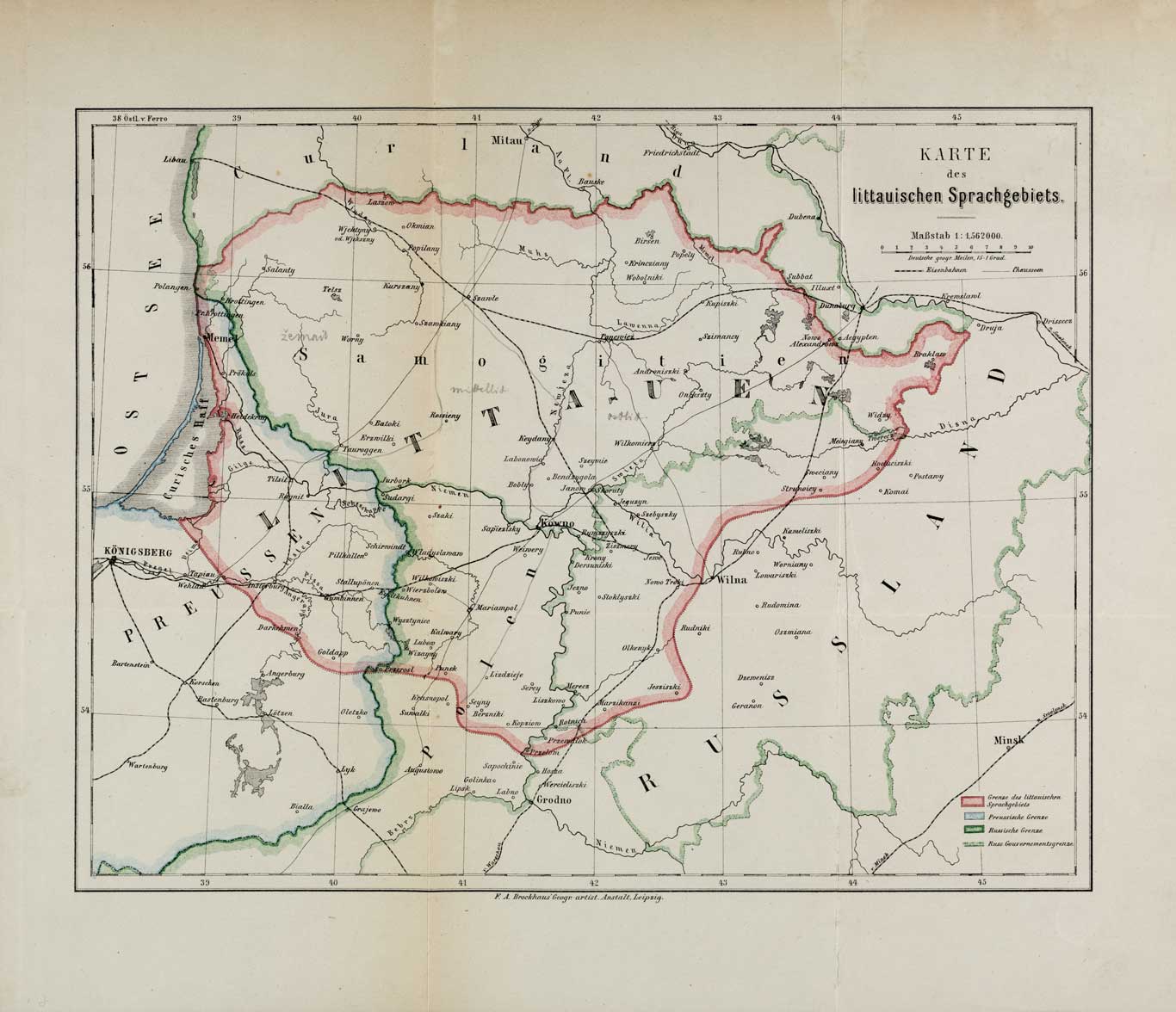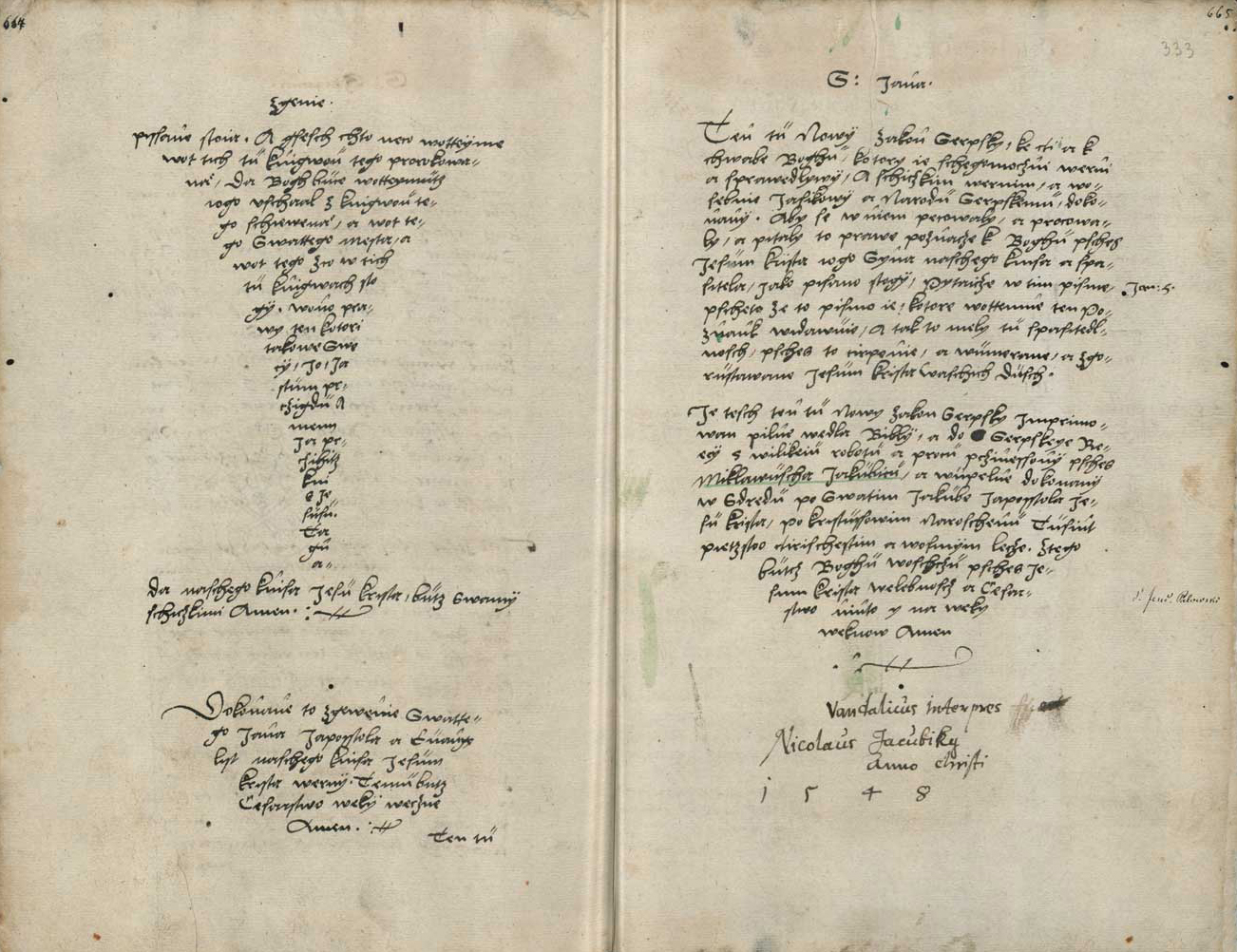Russian and Church Slavonic printed books from the 16th to 19th century
19
Research facilities for Slavonic studies
The East European Department
Auszra (Dawn), Tilžēje (Tilsit, present-day Sovetsk/Kaliningrad), 1883–1886.
The Eastern Europe Department is one of the library‘s new special departments which were established after World War II. Its foundation in the city of Marburg dates back to 1950. Outside Eastern Europe, this department holds one of the most important collections of East European literature in the world, while the focus of the collection is on humanities and social science. In 1951, the Eastern Europe Department took over the library of the linguist Eduard Hermann from Göttingen (1863–1950). This library formed an important basis for the department’s collections and it also comprised scientific literature from and about the Baltic language area.
The collection of the East European Department consists of literature from Albania, Bulgaria, Finland, Greece, Cyprus, Georgia, Croatia, Slovenia, Bosnia and Herzegovina, North Macedonia, Serbia, Montenegro, Kosovo, Poland, Rumania, Russia, the Baltic states (Estonia, Latvia, and Lithuania), Belarus, Ukraine, the Czech Republic, Slovakia, Hungary, and the Sorbian-speaking regions in Germany. Although the East European Department mainly collects literature in their original language, it also acquires books about these countries written in western European languages. Today, the East European collection comprises around 1.4 million books.
Special collections in
the East European Collection
Friedrich Kurschat: Grammatik der litauischen Sprache, Halle, 1876.
Map in colour of Lithuanian-speaking regions in Kurschat’s grammar book.
The Slavonic portal
The Staatsbibliothek zu Berlin was responsible for the special subject collection Slavic Languages and Literatures in the period from 1998 to 2015. Since 2016, the library has provided the Specialised Information Service Slavonic Studies which is funded by the Deutsche Forschungsgemeinschaft. The collection comprises more than 1.4 million printed items of the Eastern Europe Department with their valuable special collections and historical holdings.
The Slavonic portal is at the centre of the East European Department’s Specialised Information Service for Slavonic studies. The portal is for academics and students of Slavonic studies, for teachers, translators, journalists, cultural managers and for anyone interested in the Slavonic language, its literature, and history.
The portal has around 5,000 visitors from German speaking regions every month and is regarded as the central access point for Slavonic research on the internet. The website tries to provide as much bibliographical information and as many digital texts as possible, allowing searches in Latin as well as in Cyrillic script. The search range is constantly expanded via new acquisitions, the addition of tables of content, and electronic sources.
At the beginning of January 2017, the Slavonic portal was updated with a new and appealing design, improving and optimising the search feature on mobile devices and all types of browsers.





